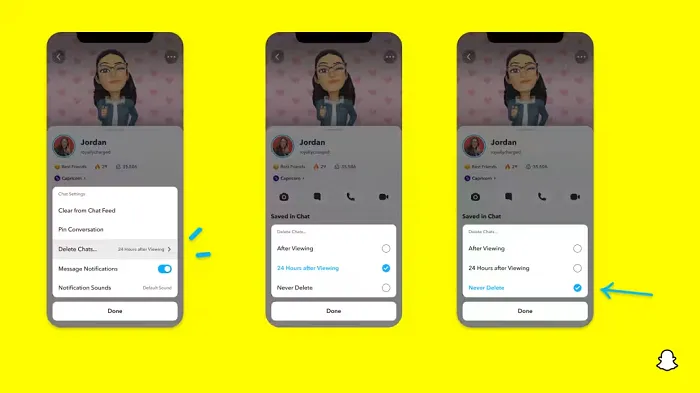SOCIAL
5 Considerations for the Future of X Following Elon’s Anti-Advertiser Comments This Week

So what comes next for Elon Musk’s ambitious “everything app” now that he’s insulted those in charge of the platform’s key revenue stream?
Will X be forced to shut down? Will Elon pay out of his own pocket to keep it running? Can X possibly make enough from subscriptions to offset its ad losses?
There are a range of considerations, and while we don’t have all the answers (because only Elon and Co. have the full data), based on reported insights, here’s what we do know about how X is currently placed.
Will X go bankrupt?
Maybe. Again, we don’t have a full overview of X’s financial situation, because as a private company, it’s no longer required to report quarterly performance statements.
But we do know that X was already set to post a loss for FY 23 before this latest advertiser exodus.
Based on previous data reported by Twitter, the platform generated around $3.96 billion from ads in 2022. In September, Elon said that the company’s ad revenue has halved since he took over, due to concerns about his new direction for the platform, as well as broader market pressures, so we can assume, then, that before this latest ad pause, X had been on track to bring in around $2 billion in ad revenue for the year.
Which is still a lot, and even with a range of advertisers pausing their campaigns, that’s only going to impact this quarter, which, based on a recent report from The New York Times, will cost X around $75 million in ad revenue overall.
So the platform’s still likely on track to bring in around $1.9 billion for the year. Which is a lot less than what Twitter had been generating, but even so, that’s a lot of money that the company’s churning over. So it’s not exactly close to shutting down entirely, depending on costs.
Which is the other complexity in this equation.
In 2022, Twitter’s costs were set to exceed $5 billion before Musk took over at the app, with around $3.8 billion of that in staff costs alone. That’s why Elon set about his drastic cost-cutting plan, which included a cull of 80% of staff, shutting down regional offices, re-negotiating rent deals, closing down a key data center, etc.
We don’t know what the full impacts of these cost-saving measures has been, but we can estimate that, in combination, X’s costs may have been brought down to around $2 billion overall, though there have also been additional costs in GPUs for xAI and other elements that Musk and his team have implemented (it’s unclear if and how these costs are attributed to X Corp, and how that relates to X’s operating margins).
But for the sake of this exercise, let’s say that X’s costs are now $2 billion, and its income from ads is $1.9 billion or so. X is also seemingly on track to bring in an additional $650 million from subscriptions and data/API sales, so overall, even with this ad boycott, X is still looking okay, maybe.
But then there’s also the debt load that X took on as part of Musk’s takeover deal. In order to acquire the full funding for his $44 billion offer for the platform, Elon also took on debt that will cost X an estimated $1.2 billion per year in interest payments.
So X is currently looking at income of around $2.5b for the year, and costs of $3.2b. Which means that any further loss will only compound this, and if advertisers stay away into the new year, things start to look pretty bleak pretty fast.
So, in summary, right now, for this year, X will probably be okay. But as the losses mount, by March next year, if things don’t turn around, X could be facing billions in losses, which may indeed end up putting it out of business.
Elon’s the richest man in the world, couldn’t he just keep X afloat with his own cash?
Probably, but it’s not necessarily as simple as it seems.
Elon does, of course, have access to billions in capital, and various means to raise more. But at the same time, he can’t just head to the bank and take out a few billion from the ATM to keep X going.
Musk has previously stated that the majority of his wealth is tied up in Tesla, SpaceX, The Boring Company, etc. So while he does have hundreds of billions to his name, he’s not necessarily liquid, and when he wants to cash out, there are processes that must be followed, and impacts as a result, so it’s not as simple as just paying it out of his personal wallet.
In order to find his purchase of Twitter, for example, Elon sold around $7 billion of Tesla stock. Which did not sit well with Tesla investors, who essentially then forced him to promise not to sell any more Tesla stock due to fears that it could tank the company’s value.
Musk also borrowed $1 billion from SpaceX around the time of his Twitter acquisition, which has since been repaid.
So, essentially, Musk can fund X as an ongoing project, but pumping billions into something with no return is not smart business, and won’t be as easy as just transferring Tesla money into X’s coffers.
Maybe other backers will help him, and be willing to take some hits, if Elon can sell them on a path to profitability. But again, telling your key revenue partners to “go f— yourself” is probably not going to win him a lot of corporate support, even from those who view him as a genius.
X is moving towards subscriptions, will that offset its ad losses?
No. Not even close, though that did, initially, seem like Musk’s ambition.
In November last year, shortly after Elon took over at Twitter, he outlined a vague plan to make subscriptions a key revenue driver, eventually accounting for 50% of Twitter’s overall revenue intake.
As per the above figures, that would mean that X would need to be bringing in more than $2 billion per year from subscriptions at its FY 2022 income levels, which equates to around 12 million paying subscribers at X’s highest priced subscription tier.
Thus far, however, X hasn’t even been able to convince a million people to pay for X Premium.
Though you can see the idea, conceptually, and why Musk thought that this was a viable option. Elon’s belief is that the majority of people support his “free speech” push in the app, and at 250 million+ daily active users, convincing just 5% of them to pay seems like an achievable target.
Evidently, that hasn’t been the case.
And while upping the cost of API access, and selling verification to brands has helped to bring in more supplementary revenue, it’s not close to bringing in anywhere near what X generates from ads.
Even at its now lower ad revenue intake, of around $2 billion for the year, its other income streams are far from generating 50% of its overall revenue.
Last month, X said that subscriptions and data sales now make up 25% of its overall intake, which seems like a positive, but that’s mostly due to X’s overall ad revenue declining so much, not its subscription intake increasing.
Will advertisers come back?
This, ideally, would be what X is aiming for, but Musk’s comments this week indicate that he’s not going to any effort to rectify the situation.
In fact, he’s actively pushing ad partners away, while also insulting publications and journalists, who have long been the key drivers of information flow in the app.
The disconnect here seems to be that Elon is associating advertisers abandoning his app with his own ideological view on what X is, and where it stands within the broader “free speech” debate.
This is evident when you look at Musk’s specific wording in his criticism of advertisers this week:
“If somebody is going to try to blackmail me with advertising, blackmail me with money, go fuck yourself. Go fuck yourself. Is that clear? I hope it is.”
Musk’s view is that advertisers are trying to make X tow the line on perceived censorship, which is not actually what’s happening.
As articulated by YouTube star Hank Green:
“Fortune 500 companies aren’t overly moral actors. They make decisions based on whether they think they will make more or less money. Advertisers are not leaving Twitter because they are trying to make a statement or achieve some goal (which would be a boycott). They are leaving Twitter because they aren’t sure whether advertising on the platform is delivering negative or positive value, and why spend a bunch of money doing something that might actually be hurting you.”
Musk’s viewing this from an ideological standpoint, but as Green notes, his business partners are worried about their respective brand value, not controlling what can and cannot be said.
That misunderstanding is at the core of Musk’s defiance, and his stance against advertiser pressure.
Will Elon see it that way, and look into potential failings in the platform’s ad serving system, and indeed his own comments, and how they represent X as an entity?
It seems, at this stage, that Elon is determined to make a stand, that he will not be silenced, even if what he shares is wrong/misinformed/harmful, etc.
That being the case, I’m not sure how Yaccarino and her team are going to be able to pitch ad partners on an improved situation moving forward.
How long does X have?
Well, all of this, of course, is variable, and dependent on a range of factors along the way.
Maybe, Elon does decide that he wants to work with ad partners, and improve the situation, and maybe that then secures X’s user base, and brings back ad partners as a result. X still has hundreds of millions of active users, and offers significant advertising opportunity as a result, so there is still a chance that X can turn things around once again.
But right now, most of X’s growth plans are still vague, while Elon has shown no interest in re-aligning the platform in this respect.
X is looking to implement payments, but is years away from making this a reality. And even if does bring payments into the app, why would people use such a service?
X is rolling out its Grok AI chatbot to more users, but most people already use ChatGPT, and there’s not really a significant differentiation between AI chatbots to make this a more attractive option.
X has added jobs, is looking at dating, and is pushing for more long-form text and video content, all of which is already available in more fully-formed, functional offerings in other apps.
With no big, game-changing advances on the horizon, and Elon standing firm on his advertising stance, I imagine that X could be in significant trouble by March next year, as its Q1 results will show just how far off it is, and how much of a loss it’s facing as a result.
X won’t necessarily report this publicly, but that’s when you’re likely to see more cost-cutting from the app, which will be a signal that it’s in serious trouble. And given that Musk has already cut most elements to the bone, it may well be staring down a massive loss, which could see it considering bankruptcy mid next year.
Things might change, X might re-assess its stances, and this could end up being a blip in its longer-term trajectory. But right now, Elon seems determined to die on his “free speech” hill, cheered on by his many fans, who hang on his every utterance, desperate for his acknowledgment in any form.
If those are the people Musk really wants to impress, then X may well end up being the cost.
And right now, Elon seems just fine with that.
SOCIAL
Snapchat Explores New Messaging Retention Feature: A Game-Changer or Risky Move?

In a recent announcement, Snapchat revealed a groundbreaking update that challenges its traditional design ethos. The platform is experimenting with an option that allows users to defy the 24-hour auto-delete rule, a feature synonymous with Snapchat’s ephemeral messaging model.
The proposed change aims to introduce a “Never delete” option in messaging retention settings, aligning Snapchat more closely with conventional messaging apps. While this move may blur Snapchat’s distinctive selling point, Snap appears convinced of its necessity.
According to Snap, the decision stems from user feedback and a commitment to innovation based on user needs. The company aims to provide greater flexibility and control over conversations, catering to the preferences of its community.
Currently undergoing trials in select markets, the new feature empowers users to adjust retention settings on a conversation-by-conversation basis. Flexibility remains paramount, with participants able to modify settings within chats and receive in-chat notifications to ensure transparency.
Snapchat underscores that the default auto-delete feature will persist, reinforcing its design philosophy centered on ephemerality. However, with the app gaining traction as a primary messaging platform, the option offers users a means to preserve longer chat histories.
The update marks a pivotal moment for Snapchat, renowned for its disappearing message premise, especially popular among younger demographics. Retaining this focus has been pivotal to Snapchat’s identity, but the shift suggests a broader strategy aimed at diversifying its user base.
This strategy may appeal particularly to older demographics, potentially extending Snapchat’s relevance as users age. By emulating features of conventional messaging platforms, Snapchat seeks to enhance its appeal and broaden its reach.
Yet, the introduction of message retention poses questions about Snapchat’s uniqueness. While addressing user demands, the risk of diluting Snapchat’s distinctiveness looms large.
As Snapchat ventures into uncharted territory, the outcome of this experiment remains uncertain. Will message retention propel Snapchat to new heights, or will it compromise the platform’s uniqueness?
Only time will tell.
SOCIAL
Catering to specific audience boosts your business, says accountant turned coach

While it is tempting to try to appeal to a broad audience, the founder of alcohol-free coaching service Just the Tonic, Sandra Parker, believes the best thing you can do for your business is focus on your niche. Here’s how she did just that.
When running a business, reaching out to as many clients as possible can be tempting. But it also risks making your marketing “too generic,” warns Sandra Parker, the founder of Just The Tonic Coaching.
“From the very start of my business, I knew exactly who I could help and who I couldn’t,” Parker told My Biggest Lessons.
Parker struggled with alcohol dependence as a young professional. Today, her business targets high-achieving individuals who face challenges similar to those she had early in her career.
“I understand their frustrations, I understand their fears, and I understand their coping mechanisms and the stories they’re telling themselves,” Parker said. “Because of that, I’m able to market very effectively, to speak in a language that they understand, and am able to reach them.”Â
“I believe that it’s really important that you know exactly who your customer or your client is, and you target them, and you resist the temptation to make your marketing too generic to try and reach everyone,” she explained.
“If you speak specifically to your target clients, you will reach them, and I believe that’s the way that you’re going to be more successful.
Watch the video for more of Sandra Parker’s biggest lessons.
SOCIAL
Instagram Tests Live-Stream Games to Enhance Engagement

Instagram’s testing out some new options to help spice up your live-streams in the app, with some live broadcasters now able to select a game that they can play with viewers in-stream.
As you can see in these example screens, posted by Ahmed Ghanem, some creators now have the option to play either “This or That”, a question and answer prompt that you can share with your viewers, or “Trivia”, to generate more engagement within your IG live-streams.
That could be a simple way to spark more conversation and interaction, which could then lead into further engagement opportunities from your live audience.
Meta’s been exploring more ways to make live-streaming a bigger consideration for IG creators, with a view to live-streams potentially catching on with more users.
That includes the gradual expansion of its “Stars” live-stream donation program, giving more creators in more regions a means to accept donations from live-stream viewers, while back in December, Instagram also added some new options to make it easier to go live using third-party tools via desktop PCs.
Live streaming has been a major shift in China, where shopping live-streams, in particular, have led to massive opportunities for streaming platforms. They haven’t caught on in the same way in Western regions, but as TikTok and YouTube look to push live-stream adoption, there is still a chance that they will become a much bigger element in future.
Which is why IG is also trying to stay in touch, and add more ways for its creators to engage via streams. Live-stream games is another element within this, which could make this a better community-building, and potentially sales-driving option.
We’ve asked Instagram for more information on this test, and we’ll update this post if/when we hear back.
-
SEARCHENGINES7 days ago
Daily Search Forum Recap: April 19, 2024
-

 WORDPRESS7 days ago
WORDPRESS7 days ago7 Best WooCommerce Points and Rewards Plugins (Free & Paid)
-

 MARKETING7 days ago
MARKETING7 days agoBattling for Attention in the 2024 Election Year Media Frenzy
-

 WORDPRESS6 days ago
WORDPRESS6 days ago13 Best HubSpot Alternatives for 2024 (Free + Paid)
-

 MARKETING6 days ago
MARKETING6 days agoAdvertising in local markets: A playbook for success
-

 SEO7 days ago
SEO7 days agoGoogle Answers Whether Having Two Sites Affects Rankings
-

 SEARCHENGINES6 days ago
SEARCHENGINES6 days agoGoogle Core Update Flux, AdSense Ad Intent, California Link Tax & More
-

 AFFILIATE MARKETING7 days ago
AFFILIATE MARKETING7 days agoGrab Microsoft Project Professional 2021 for $20 During This Flash Sale














